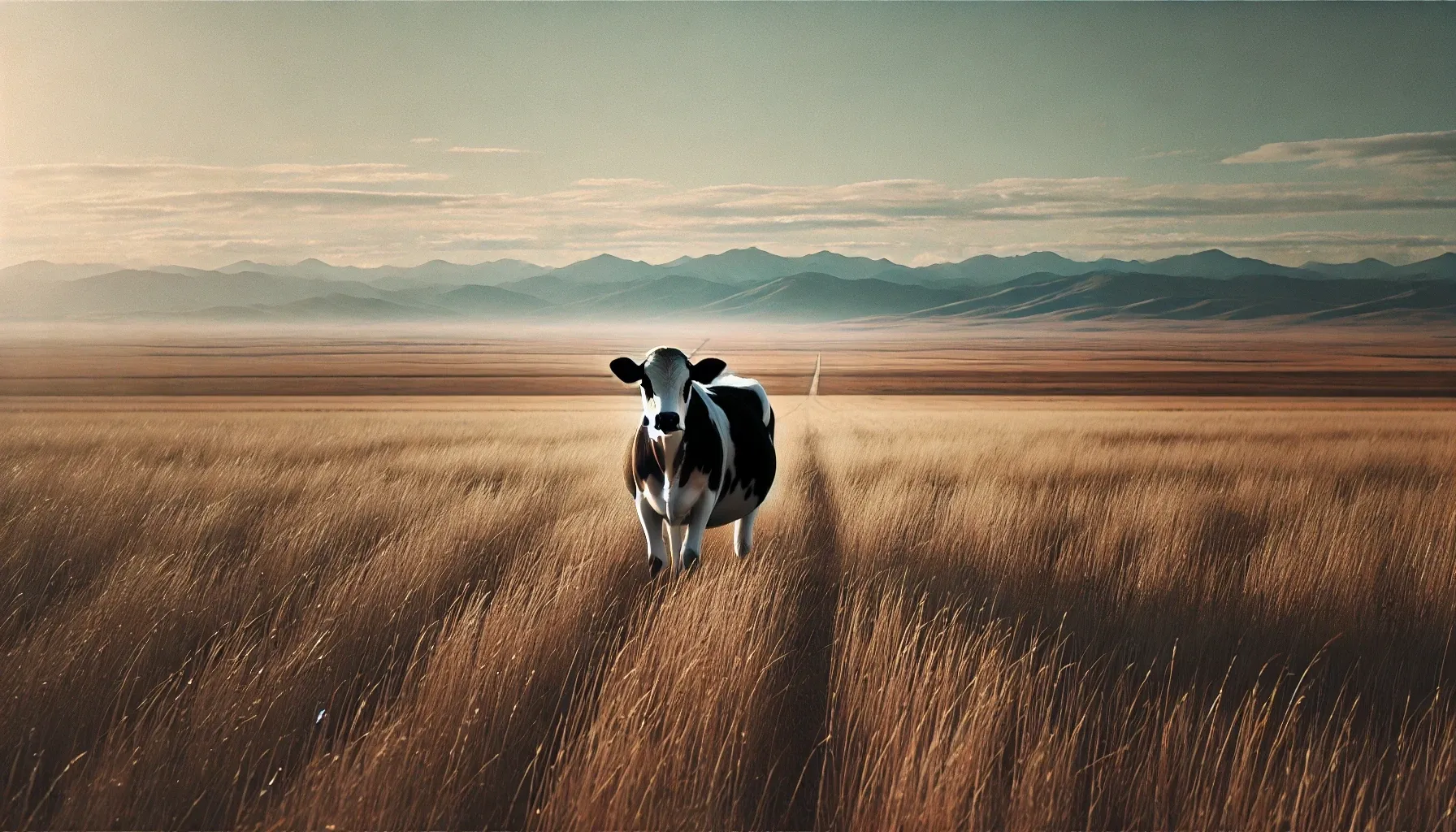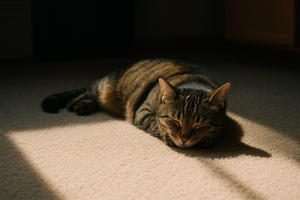Kombucha is strange.
I wanted to like it, but I couldn’t get on board with the flavor, and the smell was especially off-putting. The first time I tried it, the smell exhumed a deeply buried childhood memory—as some smells do. It took me back to my father’s dairy farm in California’s San Joaquin Valley. The landscape was so flat that I could see silhouettes of pale blue mountains in the distance: the Sierra Nevada to the east and the Coastal Range to the west. Somewhere among the smells of dirt, alfalfa, cow pastures, farm equipment, and stainless steel, a memory was lighting up in my brain that I couldn’t quite place.
The dairy had something like 400 to 600 Holstein cows, if I had to guess. I spent every other weekend there and found plenty to do. Sometimes I climbed hay bales. The bales were rectangular and tightly stacked into 15-foot-tall skyscrapers (from my short perspective). The stacks were arranged side-by-side beneath a high metal roof that stretched 60 yards. I ran along the tops of the stacks and jumped between them like they were rooftops of buildings. My dad hated it. He was afraid I’d fall and break my ankle out there, but running and jumping was too much fun. I felt like Spider-Man. Was it the smell of hay bales when it rained? Moist hay might smell a bit like kombucha, but no, that wasn’t it. This kombucha smell was strong and terrible.
Manure? No, not a sharp enough smell. Manure and I go way back—we spent plenty of time together. I walked through it often in my rubber farm boots. My favorite pair of rubber boots were red, and it was a sad day when they were ruined. The dry, cracked earth I happened to be walking on seemed fine until it broke like a thinly frozen lake. I sank a bit slower than if it were a lake because I was sinking into—yes—manure. I’m not sure how a five-year-old escapes waist-deep manure. There was no Atreyu around to try and pull me out, so I probably just yelled until someone found me. I hadn’t noticed there was an entire manure canal running alongside the pasture until I fell in.
Maybe the smell was silage. The silage was in a big, loaf-shaped mound made up of steamy grains, oats, and corn, sitting between a set of large concrete bookends and covered with a thick black tarp on top. It reminded me of a small, soft Half Dome; Yosemite was only an hour and a half away.
On Father’s Day, my dad took me to hike the Half Dome trail, but I ran out of steam five hours in, or maybe the "Beware of Bears" signs made me too nervous to continue. Either way, he was surprised that I made it that far.
For the silage, he used a tractor loader to scoop it up from the exposed side of the mound and dump it into a huge animal feed mixer wagon. He showed me how to drive the loader and operate the scoop. When I asked about the brakes, he said they didn’t work and then walked off to watch from a distance. He wasn’t kidding, it turned out. I didn’t need the brakes to scoop, but I started to panic as I approached the mixer. How did an eight-year-old get through that ordeal? I put the loader in reverse and forward repeatedly until it stopped—that’s vaguely what I remember anyway. I took in the smell of silage quite a bit that day. It definitely had a stank, but not as unpleasant as the kombucha.
Sometimes I whisked batches of formula for the calves in five-gallon buckets. The formula had a sour smell, but it wasn’t too pungent. Calves were always so ravenous when I set their bottles into the wire bottle holders attached to their individual pens. The pens were small wooden shacks, only with enough room for them to stand and lie down.
One calf, in particular, was lovely to visit. It was so clean and fluffy, like a stuffed animal. Sadly, this calf was so clean because it had no anus. Instead, there was just a flat, pink, bald spot of flesh where an anus should be. Bizarre? Yes, and more common than it should be.
In order to keep the cows lactating, they need to bear calves. Male calves born to the dairy were sold. Occasionally, the dairy would purchase a bull for breeding, and sometimes that bull originated from our dairy. You would think that tracking the bulls’ dairy of origin would be a basic fucking requirement for the company buying and selling the bulls, but obviously, that wasn’t the case. Calves like this one lived very short, painful lives.
I suppose ignorance is bliss for dairy cows. Most of the time, they seem to be chillin’. My dad revered them and disciplined his employees when he caught them hitting the cows with segments of rubber hoses. He constantly reminded the men that being loud was sufficient for corralling them into the big shower and the milking parlor. He knew they had feelings.
“They get angry when their calves are taken from them,” he once told me.
I watched my dad deliver calves a few times. Once, he tied a special six-foot chain around the hoof of a calf in breech and pulled it from its mother. “Oh nooo,” I remember thinking. He was using a chain that I always found hanging on a nail in the milking parlor. It had metal circles on each end that I slung around my index fingers as I skipped rope with it. Just then, seeing the chain drenched in afterbirth, it was clear why he always told me not to use the chain. It was a gross realization, but not as gross as that kombucha.
Now I remember. There was one activity on the dairy I could not stomach, though I didn’t see it happen often. On these not-so-special days, a cage big enough for one single cow was placed near the milking parlor. As each cow entered the cage, her head protruded through the opposite end. Vertical bars cinched on either side of her neck to keep her from moving. When the dairymen cut off her adolescent horns, blood ran down the sides of her face. Then, they branded her while she was still caged.
It was the branding. That was the smell of the kombucha—burning hair and flesh.
How interesting it is to maintain such a high level of effort and infrastructure to keep animals in a perpetual state of lactation. White gold is pumped from iodine-soaked teats into a stainless steel tank and kept at a frigid but fluid temperature. Once, and only once, my dad climbed the ladder of the tank to dip a stainless steel ladle into the raw, unpasteurized milk for me to taste.
“This is the only time,” he said. “It’s dangerous.
Milk is strange.




Comments